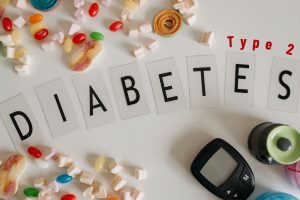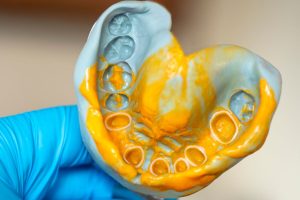This article explores the diverse range of injuries resulting from auto accidents, encompassing whiplash, spinal cord injuries, broken bones, and psychological trauma. It delves into symptoms, treatment options, and recovery strategies associated with each type of pain. Whether you’ve recently been in an accident or seek to understand such injuries better, this guide offers valuable insights.
Understanding Different Types of Pain from Auto Accidents
Recognizing and understanding various types of pain stemming from auto accidents is vital for addressing the array of injuries that can occur. These include whiplash, neck and back injuries, soft tissue injuries, head injuries, psychological injuries, spinal cord injuries, and burns. Whiplash, caused by rapid neck movement during impact, results in symptoms like neck pain and stiffness. Neck and back injuries range from strains to severe conditions like herniated discs, causing radiating pain and weakness. Soft tissue injuries damage muscles and ligaments, leading to swelling and limited mobility. Head injuries, including concussions, may result in dizziness and memory issues.
1. Whiplash
Whiplash is a common injury resulting from car accidents. It is characterized by neck strain due to sudden back-and-forth movement. Symptoms may include neck stiffness, headaches, and dizziness. Whiplash requires prompt medical attention and specialized treatment.
Whiplash typically occurs when a vehicle suddenly stops or changes direction, causing the head to jerk forward and backward. This sudden acceleration-deceleration motion can injure the neck’s soft tissues, such as muscles, ligaments, and tendons. The symptoms of whiplash can vary from person to person, with some experiencing immediate pain while others may have delayed onset. Standard diagnostic methods for whiplash injuries include physical exams, imaging tests like X-rays or MRI scans, and assessing the patient’s medical history.
2. Back and Neck Injuries
Back and neck injuries are among the most prevalent consequences of car accidents, affecting the spinal cord, muscles, and soft tissues. These injuries can lead to severe pain and discomfort, necessitating comprehensive medical evaluation and targeted treatment.
Whiplash is a common type of neck injury caused by sudden jerking motions, such as those experienced in car accidents. It results in neck strain and stiffness.
On the other hand, back injuries such as herniated discs can impact mobility and cause shooting pain, tingling sensations, or weakness in the arms or legs.
Ignoring these symptoms can exacerbate the condition, leading to long-term complications that may require surgical intervention if not addressed promptly.
3. Broken Bones
Broken bones are a significant outcome of car accidents, with fractures occurring in various parts of the body, such as limbs, ribs, and skulls. Seeking immediate medical attention is crucial to prevent further complications and ensure proper healing. “
Common types of broken bones in car accidents include simple fractures, compound fractures, greenstick fractures, and comminuted fractures. Diagnosis typically involves imaging tests like X-rays, CT scans, or MRIs to assess the extent of the injury. Treatment options range from casting and splinting for stable fractures to surgical interventions for complex breaks. Rehabilitation strategies often involve physical therapy sessions to regain strength, mobility, and function of the affected limb or body part. It’s important to follow medical advice and attend follow-up appointments to monitor the healing progress.
4. Soft Tissue Injuries
Soft tissue injuries, including sprains, strains, and contusions, are prevalent in car accidents and can result in significant pain and limited mobility. Treatment often involves physical therapy, muscle strengthening, and gradual recovery plans tailored to individual needs.
These injuries affect muscles, ligaments, and tendons, leading to inflammation and discomfort.
Prompt treatment is crucial to prevent chronic issues and encourage optimal healing.
Rehabilitation usually begins with rest, ice, compression, and elevation (RICE).
Recovery timelines vary based on the severity of the injury, ranging from a few weeks to several months.
Strategies to enhance muscle healing include proper nutrition, gentle stretching, and avoiding activities that aggravate the injury. Engaging in low-impact exercises under the guidance of professionals can promote strength and flexibility.
5. Head Injuries
Head injuries from car accidents, such as concussions and traumatic brain injuries, require immediate medical attention due to their potential for long-term consequences.
Symptoms may include headaches, dizziness, and cognitive impairment, necessitating thorough evaluation and treatment.
Regarding diagnosing head injuries after a car accident, healthcare professionals often employ imaging tests like CT scans or MRIs to assess the extent of damage to the brain and surrounding structures. These tests can reveal if there’s bleeding, swelling, or other abnormalities that require specialized medical interventions.
Specialized treatment options for severe head injuries may involve neurosurgery to alleviate pressure on the brain or rehabilitation programs to help patients regain lost motor skills and cognitive functions.
6. Facial Injuries
Facial injuries, including burns, lacerations, and fractures, are common in car accidents and can cause significant pain and emotional distress. Immediate medical attention is essential to address these injuries and prevent long-term complications.
Facial burns often occur due to contact with hot surfaces or flames during a car crash, leading to severe pain and potential scarring. Lacerations from broken glass or impact with hard surfaces can result in deep wounds that require sutures or surgical intervention. Fractures in the facial bones, such as the nose or jaw, can cause disfigurement and impact chewing and speaking ability.
7. Internal Injuries
Internal injuries, such as organ damage and internal bleeding, are often hidden consequences of car accidents and require immediate medical intervention to prevent life-threatening complications. Spinal cord injuries, in particular, can have long-lasting effects on mobility and function.
Aside from spinal cord injuries, car accidents can also lead to traumatic brain injuries, fractures, and abdominal injuries, all of which may not be immediately apparent but can have severe repercussions if left untreated.
Diagnosing internal injuries accurately poses a challenge as symptoms may not immediately manifest, necessitating thorough medical evaluation.
Treatment of these injuries often involves surgery, intensive care, and rehabilitation to regain function.
Seeking specialized care from healthcare professionals experienced in handling car accident injuries is crucial for proper diagnosis and management, ensuring the best possible outcome for recovery.
8. Psychological Injuries
Psychological injuries resulting from car accidents, such as post-traumatic stress disorder (PTSD) and anxiety, can have a profound impact on emotional and mental health. Seeking therapy and support services is crucial for addressing these invisible but significant consequences.
Survivors of car accidents often experience a range of mental health challenges, including depression, flashbacks, and intrusive thoughts. These symptoms can disrupt daily life and relationships, leading to feelings of helplessness and isolation.
Therapeutic approaches like cognitive-behavioral therapy (CBT) and eye movement desensitization and reprocessing (EMDR) have shown promise in helping individuals process traumatic experiences and manage their symptoms effectively.
Developing healthy coping mechanisms, such as mindfulness practices, exercise, and connecting with support groups, can play a crucial role in promoting emotional resilience and recovery after a car accident.
9. Spinal Cord Injuries
Spinal cord injuries resulting from car accidents can have devastating effects on mobility and sensory functions. Immediate medical treatment and rehabilitative care are essential for maximizing recovery and improving the quality of life for individuals with spinal cord injuries.
These injuries can lead to paralysis, loss of sensation, impaired motor functions, and other life-altering consequences. Spinal cord trauma is a complex medical condition that requires specialized care from a multidisciplinary team of healthcare professionals. Treatment options may include surgery, medication, and physical therapy to address each patient’s needs.
Rehabilitation programs play a crucial role in helping individuals with spinal cord injuries regain independence and adapt to their new circumstances. These programs focus on improving physical strength, mobility, and functional abilities through exercises, therapeutic techniques, and assistive devices.
10. Burns
Burn injuries sustained in car accidents can range from minor burns to severe third-degree burns, requiring specialized medical care and long-term rehabilitation. Treatment focuses on pain management, wound healing, and physical recovery to restore functionality.
Minor burns, often referred to as first-degree burns, are superficial injuries that affect the outer layer of the skin. They usually heal within a few days with proper wound care.
Second-degree burns extend deeper into the skin, causing more pain and blistering. In contrast, third-degree burns are the most serious, damaging all layers of the skin and potentially affecting nerves and underlying tissues.
Medical professionals typically assess the extent of burns and develop individualized treatment plans. This may include debridement, skin grafting, and specialized dressings to facilitate healing. Rehabilitation plays a vital role in burn recovery, focusing on physical therapy, occupational therapy, and psychological support to address the emotional trauma often associated with burn injuries.
Physical challenges for burn survivors can be extensive, including impaired mobility, scarring, and potential loss of function in affected areas. Emotional challenges such as post-traumatic stress disorder (PTSD) are also common and require comprehensive mental health support. The journey to recovery for individuals with burn injuries sustained in car accidents can be long and arduous, requiring a multidisciplinary approach and ongoing care to achieve optimal outcomes.
Symptoms, Treatment, and Recovery
Understanding symptoms, treatment options, and recovery processes is crucial for car accident victims to address injuries effectively and regain optimal health. Seeking prompt medical attention after an accident is vital, as symptoms like neck pain, headaches, and dizziness may indicate underlying issues such as whiplash or internal bleeding. Medical professionals, such as those at Physicians Group, LLC, an auto accident clinic, provide complete care for car accident injuries, conducting evaluations and recommending treatment modalities like physical therapy or surgery based on the severity of injuries. Recognizing common symptoms and seeking immediate medical attention, especially for head injuries, can prevent further complications. Consulting both medical and legal experts is essential for navigating the recovery process and insurance claims effectively.
Comprehensive Recovery Approach
Comprehensive recovery post-car accidents involves addressing both physical and emotional healing through effective strategies. Physical rehabilitation focuses on improving mobility and strength through personalized exercise routines and medical interventions. Psychological support is essential for addressing trauma and promoting mental well-being. Social reintegration strategies rebuild connections and community engagement. Vocational rehabilitation assists in returning to work and finding meaningful employment. Factors impacting recovery include injury severity, pain levels, and treatment compliance. Prompt medical attention and effective pain management are crucial. Implementing recovery strategies like physical therapy and self-care techniques expedites healing. Social and occupational reintegration programs aid in readjustment to daily life and financial stability. Counseling, vocational training, and communication strategies are integral to this process.












